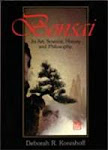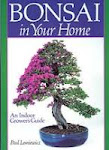
Mission of Transformation
by Roberts Steven
ISBN 9789799920331 HC pp. 247
Published 2009
Suprindo Offset Printing-Indonesia
Mission of Transformation is Robert's second book. For those who have or have read the first, this book is an excellent addendum to his first.
If transformation is a mission, dignity of life is the design
When we try to show everything we show nothing
When we try to show everything we show nothing
Who is Robert Steven and what message is he trying to convey? The answer is probably as complex as the man himself. The best way to describe Robert is to understand him, the best way to understand him is through his quotes and his life philosophy in general.
In my intuition I find myself
In myself I find freedom
In nature I find the rule
In the rule I find the wisdom
In myself I find freedom
In nature I find the rule
In the rule I find the wisdom
You don’t need to have ears
You don’t need to have eyes
For you can hear my unspoken silence
You can see the echo of my vision
You don’t need to have eyes
For you can hear my unspoken silence
You can see the echo of my vision
When I break you down
I cannot undo my error
I cannot delete my mistake
But I can edit with my love…
(designing trees)
I cannot undo my error
I cannot delete my mistake
But I can edit with my love…
(designing trees)
If I were a composer I would honor you with my love song
If I were just a poet I would write you the lyric of my soul
But I am just a Bonsai artist and, can only shape you with my life!
Obviously, all the textbook conventions for bonsai are derived from fundamental concepts of artistry and aesthetic principals of visual art. Among the aesthetic principals of visual art are: line; form; color; texture; composition; dimension; perspective; and balance.
A working understanding of these concepts will enable us to freely create and innovate without hesitation because we understand the essence of the art and what these conventions refer to. Furthermore, a solid understanding of horticultural theory and natural rules is very important to our ability to simulate natural phenomena in a convincing manner. (Excerpt from Behind the Rules)
Probably the best composition that encompasses Robert's vision for bonsai (in my opinion) is his Casuarina pictured above. Why is that? It doesn't look like a bonsai but a replication of what could be found/seen around the corner on any given road. So what is so special about this composition? I believe the following quote from his first book sums it up nicely!
The folks who understood "the man" and were moved by his first book, will see their bonsai education into the artistic and aesthetic part of bonsai further enhanced.
The book is laid out in 10 chapters:
Introduction
Bonsai and nature
Transformation
Designing
Aging
The principles of good bonsai design
Transformation studio
Critique
Gallery and finally
Chronicle of a Premna adventure
Introduction (excerpt)
Any shape or style of tree in nature is not miraculously formed; there are always horticultural clues behind the present form.
Three aspects form the style of a tree: the nature of the species; the condition where it grows; and the exterior influence.
To create a good bonsai there are three aspects to follow: artistic beauty; horticultural clues; and thematic messages.
Robert then leads us through the remaining chapters. The sequential flow of information between chapters is well done. The information is laid out in such a way that the information provided in any given chapter, becomes the foundation for subsequent information and chapters. The information presented is easily understood and, photographs are used to further enhance the intended message.
I am not one to reinvent the wheel. Probably the best way to provide insight into this book is to provide the following remarks from the Preface:
"Vision of My Soul" was a refreshing and unprecedented book explaining the design elements utilized for bonsai creation. It did not discuss the technical nor cultural aspects for bonsai which most other bonsai books cover.
Mission of Transformation continues on with his study of bonsai design and how it is utilized when creating specimens. The technical and horticultural aspects are not discussed here either, but Robert thoroughly explains the principles of good bonsai design and how they are applied when creating bonsai from both collected stock and nursery grown plant material. (William Valavanis)
Bonsai is the most backward looking art that I know of. In general, bonsai books never fail to teach tradition, but usually not even exactly how tradition is seen in Japan.
Robert Steven has totally broken away from this method of teaching. He does not really even mention tradition in his book, instead he gives great insights to those who are desperatetly trying to grasp what the artistic side of bonsai is all about...
What was started in his first book "Vision of My Soul" in describing artistic principles and aesthetic considerations is put into practice here in this book...
Following the old principle that states a picture is worth a thousand words, Robert uses a couple hundred of well chosen photographs to illustrate his words and beliefs. I dare say that this book will become a classic. It is a must for every advance student of bonsai. Beginners will profit vastly because they very soon will find out there are more than six bonsai forms... (Walter Pall)
The following addendum forms part of my review.
Bibliography: Robert's blog and book, Mission of Transformation
If I were just a poet I would write you the lyric of my soul
But I am just a Bonsai artist and, can only shape you with my life!
Obviously, all the textbook conventions for bonsai are derived from fundamental concepts of artistry and aesthetic principals of visual art. Among the aesthetic principals of visual art are: line; form; color; texture; composition; dimension; perspective; and balance.
A working understanding of these concepts will enable us to freely create and innovate without hesitation because we understand the essence of the art and what these conventions refer to. Furthermore, a solid understanding of horticultural theory and natural rules is very important to our ability to simulate natural phenomena in a convincing manner. (Excerpt from Behind the Rules)
Casuarina equisetifolia raft
Probably the best composition that encompasses Robert's vision for bonsai (in my opinion) is his Casuarina pictured above. Why is that? It doesn't look like a bonsai but a replication of what could be found/seen around the corner on any given road. So what is so special about this composition? I believe the following quote from his first book sums it up nicely!
On its root I firmly commit
In its trunk I keep my soul
Through its leaves I reflect my vision
In its trunk I keep my soul
Through its leaves I reflect my vision
The folks who understood "the man" and were moved by his first book, will see their bonsai education into the artistic and aesthetic part of bonsai further enhanced.
The book is laid out in 10 chapters:
Introduction
Bonsai and nature
Transformation
Designing
Aging
The principles of good bonsai design
Transformation studio
Critique
Gallery and finally
Chronicle of a Premna adventure
Introduction (excerpt)
Any shape or style of tree in nature is not miraculously formed; there are always horticultural clues behind the present form.
Three aspects form the style of a tree: the nature of the species; the condition where it grows; and the exterior influence.
To create a good bonsai there are three aspects to follow: artistic beauty; horticultural clues; and thematic messages.
Robert then leads us through the remaining chapters. The sequential flow of information between chapters is well done. The information is laid out in such a way that the information provided in any given chapter, becomes the foundation for subsequent information and chapters. The information presented is easily understood and, photographs are used to further enhance the intended message.
I am not one to reinvent the wheel. Probably the best way to provide insight into this book is to provide the following remarks from the Preface:
"Vision of My Soul" was a refreshing and unprecedented book explaining the design elements utilized for bonsai creation. It did not discuss the technical nor cultural aspects for bonsai which most other bonsai books cover.
Mission of Transformation continues on with his study of bonsai design and how it is utilized when creating specimens. The technical and horticultural aspects are not discussed here either, but Robert thoroughly explains the principles of good bonsai design and how they are applied when creating bonsai from both collected stock and nursery grown plant material. (William Valavanis)
Bonsai is the most backward looking art that I know of. In general, bonsai books never fail to teach tradition, but usually not even exactly how tradition is seen in Japan.
Robert Steven has totally broken away from this method of teaching. He does not really even mention tradition in his book, instead he gives great insights to those who are desperatetly trying to grasp what the artistic side of bonsai is all about...
What was started in his first book "Vision of My Soul" in describing artistic principles and aesthetic considerations is put into practice here in this book...
Following the old principle that states a picture is worth a thousand words, Robert uses a couple hundred of well chosen photographs to illustrate his words and beliefs. I dare say that this book will become a classic. It is a must for every advance student of bonsai. Beginners will profit vastly because they very soon will find out there are more than six bonsai forms... (Walter Pall)
The following addendum forms part of my review.
Bibliography: Robert's blog and book, Mission of Transformation








1 comment:
You are welcome.
Post a Comment